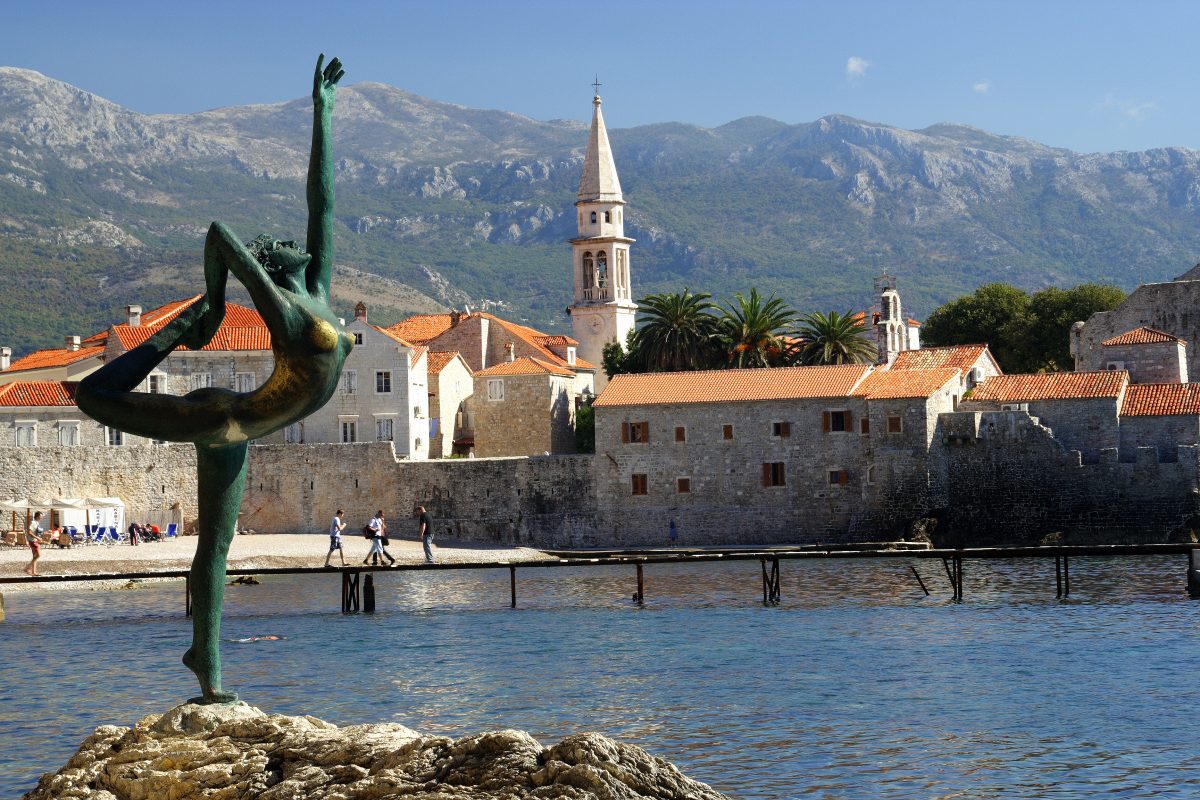We’d only just arrived in Montenegro and here we were sitting in a garishly-coloured motorboat heading for Hawaii! As Jovan, a rosy-faced sailor, steered his pride and joy across the short stretch of emerald water, he pointed excitedly and in pidgin English, enthused, “There’s paradise, Hawaii next-stop.”
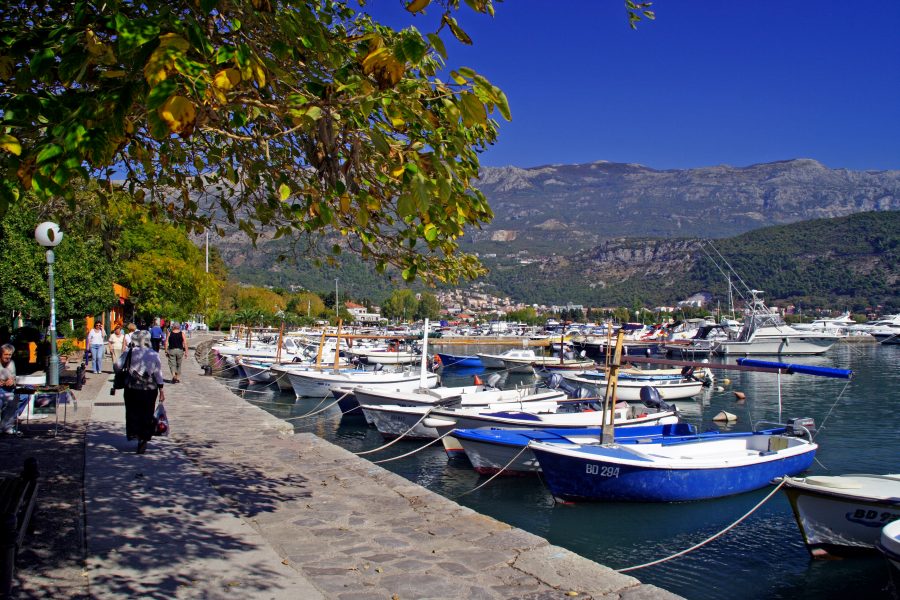
(c) Richard Webber
We’d left our mooring at Budva, one of the oldest settlements on the Adriatic coast, just minutes before and now the boat was cutting through the warm water towards a wedged-shaped island we later discovered was called Sveti Nikola, but mysteriously christened Hawaii by the locals.
Bobbing towards the jetty on the tree-clad lump of rock, I was disappointed not to be greeted by hula girls showering us with leis on climbing from the boat, making do with a firm shake of Jovan’s weather-beaten hand, instead.
While I couldn’t spot a resemblance with the island’s namesake in the Pacific, we enjoyed an uninterrupted view of the Budva Riviera and its mountain backdrop as well as a chance to enjoy a moment’s relaxation on a deserted beach, just one of 117 dotted along Montenegro’s 180-mile coastline.
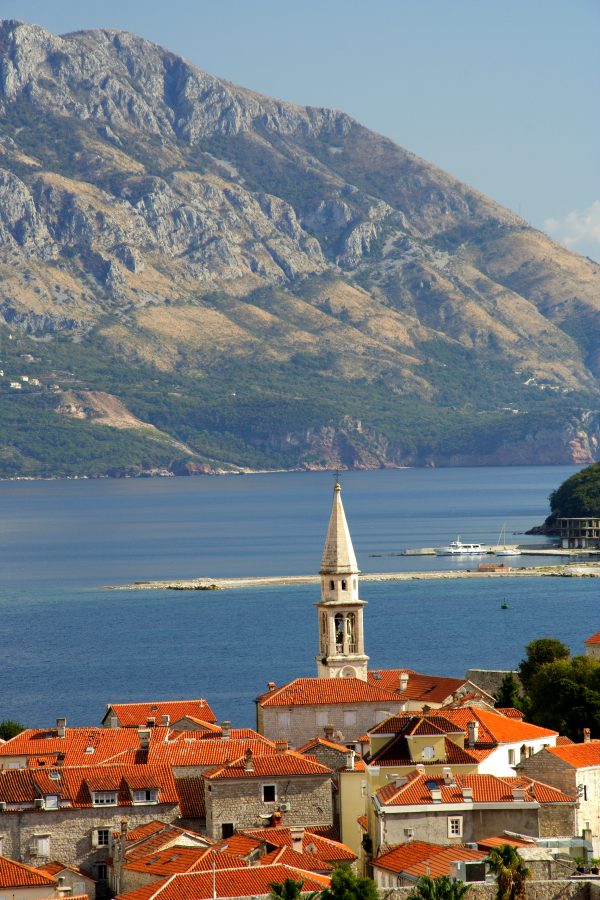
(c) Richard Webber
Before the Balkan War, Montenegro was a regular haunt of the rich and famous, including Sophia Loren, Kirk Douglas, Doris Day and supermodel Claudia Schiffer. Now the glitterati are returning: Madonna has just performed in concert while rumours are rife that Roman Abramovich has set his sights on turning Velika Plaza, an eight-mile long white sandy beach in the south, into a luxurious resort.
Since the war ended, neighbouring Croatia has taken the plaudits for re-marketing itself as a holiday destination while Montenegro, no bigger than East Anglia, has remained in its shadow.
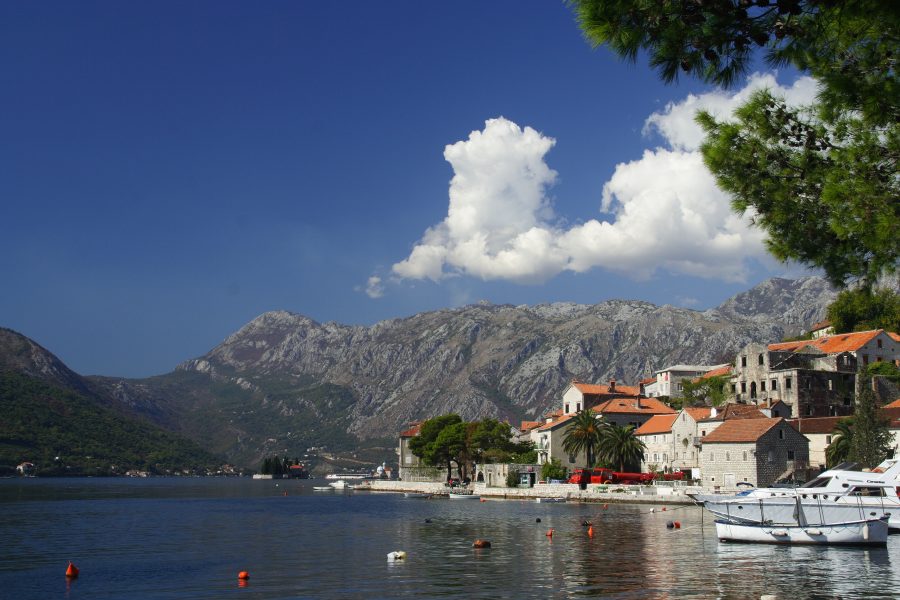
(c) Richard Webber
Now, it’s slowly revealing to the outside world what jewels it possesses, including myriad beaches, ideal for family holidays, seemingly impenetrable mountain ranges and an array of historic towns to investigate, like Budva.
Back on dry land, we said farewell to Jovan and walked along the promenade to the Old Town. Strolling through its labyrinths, we explored tiny squares, the Citadel and shops before stopping for a creamy latte at Caffe Greco. We admired the painstaking restoration that has seen the old quarter returned to its former splendour after being crushed by the might of 1979’s catastrophic earthquake.

(c) Richard Webber
This isn’t the only example of how Montenegrins treasure their heritage: equally impressive is Kotor Old Town, one of the best preserved medieval towns in Europe, which we checked out the following day.
Hopping in our hire car, we drove up the coast. Graded a UNESCO World Heritage Site, Kotor sits at the head of southern Europe’s deepest fjord, the Boka Kotorska, which cuts 18 miles into the mountains.
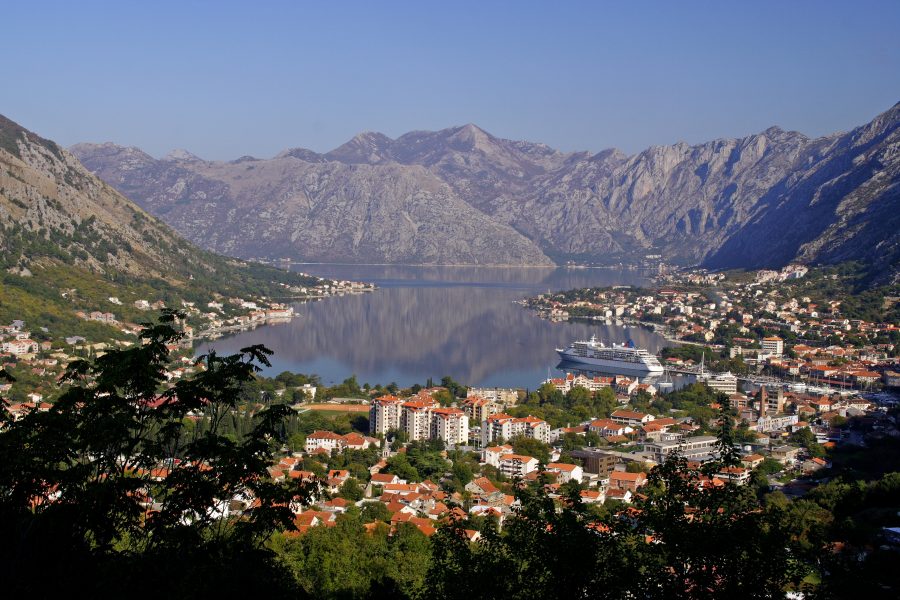
(c) Richard Webber
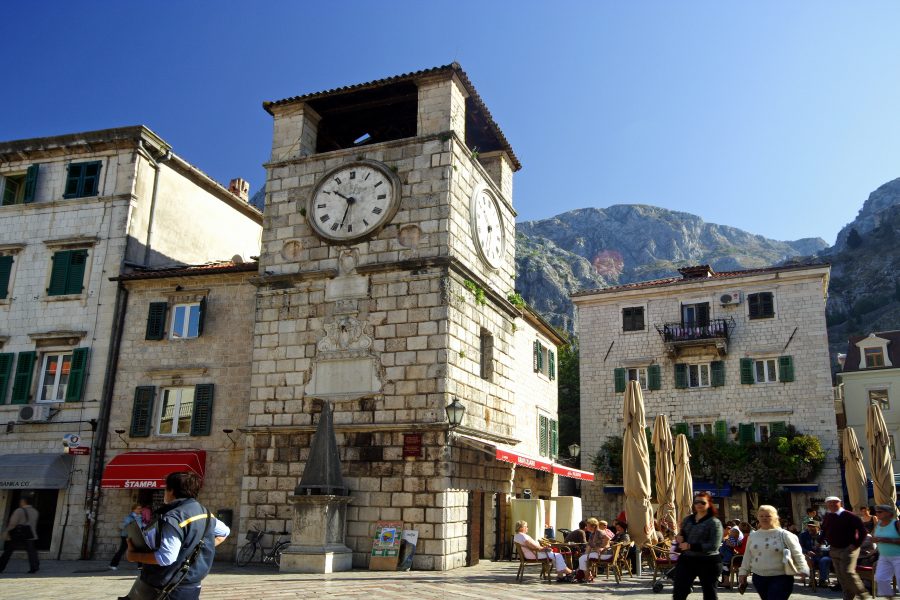
(c) Richard Webber
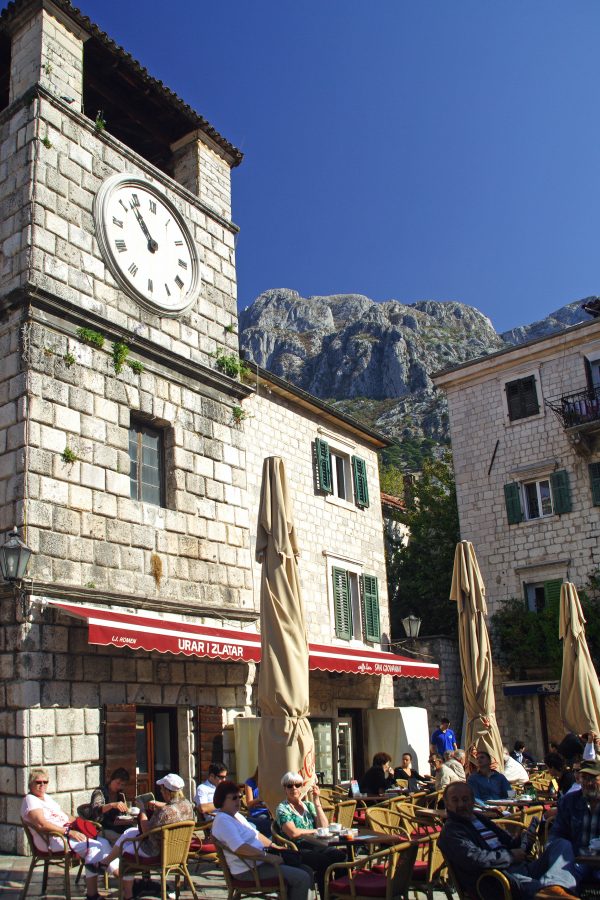
(c) Richard Webber
After admiring the flotilla of yachts in the marina, we entered the Old Town through a tiny gap in the four-mile long, 60-foot high wall. Equally resplendent as Budva’s old town, this maze of alleys and squares offers a cornucopia of culture, art and history.
We stopped for lunch at the San Giovanni Café, situated below a 16th century clock tower, while the distant sound of Chopin drifted down from a shuttered building, a fitting moment considering we were surrounded by classical splendour, including the churches of St Luka and St Mary, dating from the 12th century, and the Prince’s Palace from the 17th.
Any visit to Montenegro isn’t complete, though, without a trip to the mountains, and you don’t have to travel far before you’re surrounded by soaring peaks and deep gorges, like the Tara Canyon, the second deepest in the world at over 4000 feet.
We braved the vertiginous E80 highway snaking its way inland, passing the capital, Podgorica, into the Moraca Canyon. Despite being dwarfed by its big brother, the Tara, it’s still impressive, with its perpendicular walls of rock reaching to heights of 1200 feet in places.
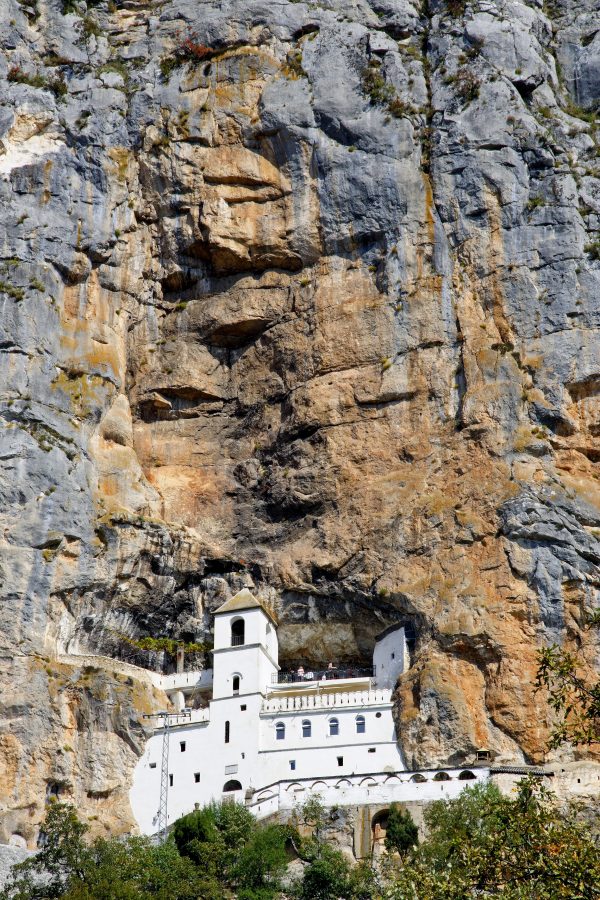
(c) Richard Webber
We finished our day trip at the town of Kolasin, one of the country’s ski centres, and situated at the foot of the Bjelasica and Sinjajevina mountains and close to Biogradsha Gora National Park, a beautiful corner of Montenegro with six glacial lakes, soaring mountains of over 6000 feet and untouched forest.
After a welcome coffee break at a roadside café, it was time to turn around and head back to the coast via a detour to the banks of Skadar Lake. For such a tiny country, Montenegro has more than its share of treasures. Not satisfied with the world’s second deepest canyon, Europe’s most southerly fjord and myriad beaches unequalled in this part of the world, the 27-mile long lake is the largest in the Balkans.
Tranquillity emanates from this spot, despite being one of the country’s most visited locations. The air is filled with birdsong, which isn’t surprising considering it is an ornithologist’s dream. Home to 270 bird species, including the rare dalmatian pelican and black ibis, we stopped to stretch our legs and found the only noise was the whisper of the breeze tickling the reeds.
Driving back to our hotel in Becici, the 236-room Queen of Montenegro, overlooking the Adriatic, we were soon descending the mountains towards the sea. Myriad olive groves lined the road, a fraction of the estimated 400,000 growing here. Legend has it that every man hoping to wed had to plant ten olive trees. Symbolic, perhaps, of new life and hope, it typifies what is happening to Montenegro, with increasing number of tourists visiting each year.
Negotiating the last of the hairpin bends, the coastline came into view. Enticed by the glittering water, there was time for a dip before returning to the hotel. Petrovac, situated between Budva and the port of Bar, offers a long sandy beach and as my seven-year-old daughter delighted in burying my legs in sand, she asked if we were going to Hawaii again. We don’t need a Pacific paradise because we have our own here, I replied.
It’s clear from the array of beaches, including Petrovac’s, fringed by an attractive promenade boasting restaurants, cafés, boutiques and fishermen selling their wares, and the shallow town beach at Ulcinj, near the Albanian border, that Montenegro doesn’t need an association with anywhere else because it has its own unique beauty.

(c) Richard Webber

(c) Richard Webber
Must do…
Amble around the historic towns of Budva and Kotor, remembering your camera because there’s a photo opportunity around every corner.
To appreciate Montenegro’s dramatic coastline with its mountainous backdrop, take a boat trip around Budva bay and admire its beauty from a different perspective.
Head down to Skadar Lake, a national park and one of the largest lakes in Europe. Over 40 different species of fish and 270 types of birds make this area a must for nature lovers.
Admire the breathtaking scenery en route to Cetinje, which for 500 years was the capital before being usurped by Podgorica.
Montenegro boasts some spectacular monasteries in the most precarious of places. Twenty miles from Podgorica, Ostrog Monastery is built into vertical cliffs and although reaching it by car or coach isn’t for the faint-hearted, it’s worth the effort.
If you want to widen your travel horizons, hop across borders for the day and visit the stunning Croatian city of Dubrovnik or the eye-opening Albanian city of Skodra, off limits to visitors for many years.
Stop off at Sveti Stefan, a former island but now connected to the mainland by a narrow isthmus. Once the country’s most exclusive resort, the likes of Marilyn Monroe, Kirk Douglas and Sophia Loren were guests. Currently closed for renovation, it’s still worth visiting. And with its own beach, you can dip your toes in the water at the same time.
Take a hike, especially if you want to admire the scenery at your own pace and fancy some solitude because you’ll often be the only person around.

